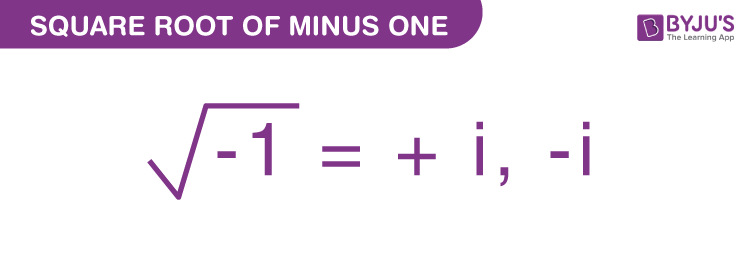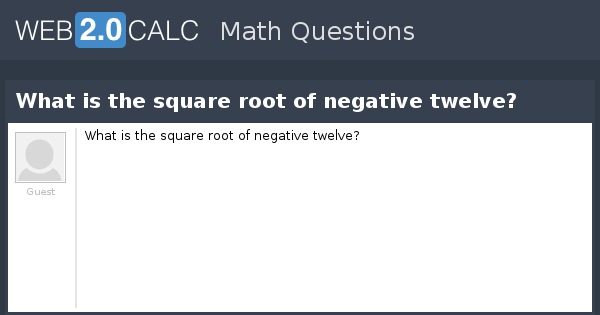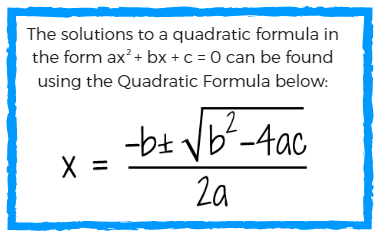Topic 3 square root of 12: The concept of "3 square root of 12" involves simplifying the expression and exploring its applications. This article covers various methods to simplify square roots, mathematical examples, and practical uses of the square root of 12. Discover how to break down complex roots into simpler forms and understand their relevance in different mathematical contexts.
Table of Content
Simplifying the Expression \(3 \sqrt{12}\)
To simplify the expression \(3 \sqrt{12}\), we need to follow these steps:
Step-by-Step Simplification
- Factorize the number under the square root:
\[
12 = 4 \times 3
\] - Rewrite the expression using the factors:
\[
3 \sqrt{12} = 3 \sqrt{4 \times 3}
\] - Use the property of square roots:
\[
\sqrt{a \times b} = \sqrt{a} \times \sqrt{b}
\]Apply this to the factors:
\[
3 \sqrt{4 \times 3} = 3 \sqrt{4} \times \sqrt{3}
\] - Simplify the square root of the perfect square:
\[
\sqrt{4} = 2
\]So,
\[
3 \sqrt{4} \times \sqrt{3} = 3 \times 2 \times \sqrt{3}
\] - Multiply the constants:
\[
3 \times 2 = 6
\]Thus,
\[
3 \sqrt{12} = 6 \sqrt{3}
\]
Conclusion
The simplified form of \(3 \sqrt{12}\) is \(6 \sqrt{3}\).
Decimal Form
If you prefer the decimal form, you can calculate \(6 \sqrt{3}\) as approximately 10.392.
Additional Information
Remember, the square root of a non-perfect square (like 12) is an irrational number, meaning it cannot be expressed as a simple fraction and its decimal form is non-repeating and non-terminating.
| Expression | Simplified Form | Decimal Form |
|---|---|---|
| \(3 \sqrt{12}\) | \(6 \sqrt{3}\) | 10.392 |

READ MORE:
Understanding the Square Root of 12
To understand the square root of 12, we start by breaking down the number into its prime factors. The prime factorization of 12 is 22 × 3. Using this, we can simplify the square root as follows:
- The square root of a product is the product of the square roots: √(12) = √(4 × 3).
- Since 4 is a perfect square, it can be simplified: √(4 × 3) = √4 × √3 = 2√3.
This means the simplest form of the square root of 12 is 2√3. Now, let's look at this in exact and decimal forms:
| Exact Form: | 2√3 |
| Decimal Form: | Approximately 3.464 |
We can also understand the square root of 12 using the long division method to get a more accurate decimal value:
- Pair the digits of 12 from right to left.
- Find the largest number whose square is less than or equal to 12.
- Bring down pairs of zeros and continue the process to find a more precise decimal value.
Finally, it’s important to note that the square root of 12 is an irrational number, meaning it cannot be expressed as a simple fraction and its decimal representation goes on forever without repeating.
By understanding these steps and properties, we can better grasp the concept and applications of the square root of 12.
Step-by-Step Simplification Process
In this section, we will simplify the expression \(3\sqrt{12}\) step by step. Simplifying such expressions involves breaking down the radical and simplifying the coefficients.
- Identify the factors inside the radical:
\(\sqrt{12}\) can be broken down as \(\sqrt{4 \times 3}\).
- Apply the property of square roots:
\(\sqrt{ab} = \sqrt{a} \times \sqrt{b}\).
- Simplify the square roots of perfect squares:
\(\sqrt{4 \times 3} = \sqrt{4} \times \sqrt{3} = 2\sqrt{3}\).
- Multiply the simplified radical by the coefficient:
\(3 \times 2\sqrt{3} = 6\sqrt{3}\).
Therefore, the simplified form of \(3\sqrt{12}\) is \(6\sqrt{3}\).
Mathematical Rules and Properties
Understanding the mathematical rules and properties involved in simplifying square roots is essential. These principles allow us to manipulate and simplify expressions involving square roots. Below is a detailed explanation of these rules:
Product Property of Square Roots
The product property states that the square root of a product is equal to the product of the square roots of the factors:
\[\sqrt{a \cdot b} = \sqrt{a} \cdot \sqrt{b}\]
This property is useful in breaking down complex square roots into simpler components.
Quotient Property of Square Roots
Similarly, the quotient property states that the square root of a quotient is equal to the quotient of the square roots of the numerator and the denominator:
\[\sqrt{\frac{a}{b}} = \frac{\sqrt{a}}{\sqrt{b}}\]
This property helps in simplifying expressions involving the division of square roots.
Simplifying Square Roots
To simplify a square root, we look for the largest perfect square factor of the radicand (the number inside the square root). For example:
- For \(\sqrt{12}\), we identify that 12 can be factored into 4 and 3, where 4 is a perfect square.
- Thus, \(\sqrt{12} = \sqrt{4 \cdot 3} = \sqrt{4} \cdot \sqrt{3} = 2\sqrt{3}\).
Combining Like Terms
When adding or subtracting square roots, we can only combine like terms. Like terms have the same radicand. For example:
- \(2\sqrt{3} + 3\sqrt{3} = (2 + 3)\sqrt{3} = 5\sqrt{3}\).
Examples and Applications
| Expression | Simplification |
|---|---|
| \(\sqrt{45}\) | \(\sqrt{9 \cdot 5} = \sqrt{9} \cdot \sqrt{5} = 3\sqrt{5}\) |
| \(\sqrt{18}\) | \(\sqrt{9 \cdot 2} = \sqrt{9} \cdot \sqrt{2} = 3\sqrt{2}\) |
| \(\sqrt{72}\) | \(\sqrt{36 \cdot 2} = \sqrt{36} \cdot \sqrt{2} = 6\sqrt{2}\) |
By mastering these rules and properties, one can efficiently simplify and work with square roots in various mathematical contexts.
Real-World Examples
Understanding the concept of the square root of 12 can be enhanced by exploring real-world examples where this mathematical principle is applied. Below are some practical scenarios that illustrate its use:
-
Geometry and Measurement:
In geometry, the square root of 12 often appears when calculating dimensions. For instance, if the area of a square is 12 square units, each side of the square would be the square root of 12, approximately 3.464 units.
-
Physics and Engineering:
Engineers and physicists might encounter the square root of 12 when dealing with wave equations, signal processing, or other calculations involving square roots. For example, if a certain mechanical part needs to withstand a force that squares to 12, the actual force it needs to handle is the square root of 12.
-
Finance and Economics:
In finance, the square root function can be used in risk assessment and portfolio management. For example, the volatility of a stock portfolio could be described using standard deviation, which involves square roots. If a financial model involves a squared term that equals 12, the root, about 3.464, may represent a risk factor or volatility index.
-
Everyday Life:
Even in everyday situations, the square root of 12 can be relevant. For example, when determining the dimensions of a space or an object, like a garden with an area of 12 square meters, finding the side length involves calculating the square root of 12.
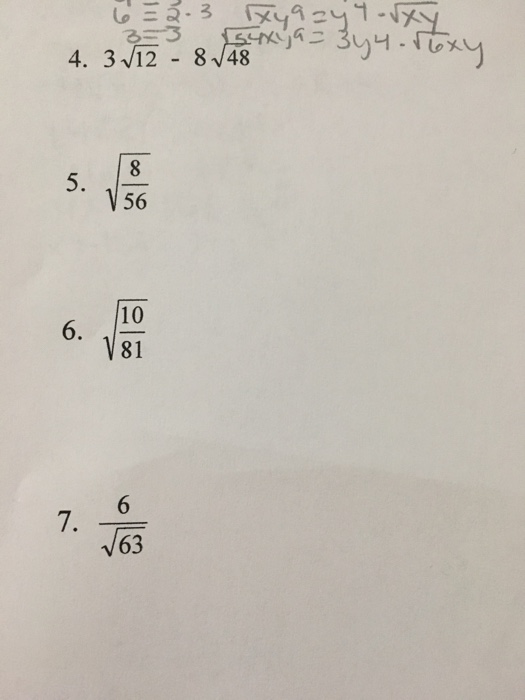
Decimal and Radical Forms
The expression "3 square root of 12" can be represented in both decimal and radical forms. Understanding these forms can help simplify calculations and provide a clearer understanding of the value.
Radical Form
In its simplest radical form, the square root of 12 can be expressed as:
\\[
\sqrt{12} = 2\sqrt{3}
\\]
Therefore, "3 square root of 12" in radical form becomes:
\\[
3 \times 2\sqrt{3} = 6\sqrt{3}
\\]
Decimal Form
The decimal approximation of the square root of 12 is approximately 3.464. Therefore, "3 square root of 12" in decimal form is:
\\[
3 \times \sqrt{12} \approx 3 \times 3.464 = 10.392
\\]
This dual representation allows for flexibility depending on whether a precise radical form or a more intuitive decimal form is required for calculations.
Common Mistakes to Avoid
When dealing with square roots and their properties, there are several common mistakes that students and learners should be aware of and avoid. Understanding these errors can help improve accuracy and confidence in solving mathematical problems involving square roots.
-
Misinterpreting the Square Root Symbol:
One common mistake is writing \( \sqrt{25} \) as \( \pm 5 \). The square root function only yields the principal (positive) root. Therefore, the correct expression is \( \sqrt{25} = 5 \).
-
Incorrect Simplification of Square Roots:
Another frequent error is simplifying square roots incorrectly. For instance, \( \sqrt{x^2} \) is often mistakenly simplified to \( x \). The correct simplification is \( \sqrt{x^2} = |x| \), as the square root function always returns a non-negative result.
-
Forgetting to Rationalize the Denominator:
When dealing with fractions that have a square root in the denominator, students may forget to rationalize it. For example, \( \frac{1}{\sqrt{2}} \) should be rationalized to \( \frac{\sqrt{2}}{2} \).
-
Not Using the Order of Operations:
Failing to follow the order of operations (PEMDAS/BODMAS) can lead to incorrect results. Always ensure to perform operations inside the square root before applying other operations.
-
Confusing the Properties of Exponents and Roots:
Mixing up the rules for exponents and roots is another common mistake. For example, \( \sqrt{x^2} \neq x \). Always remember the distinct properties that govern roots and exponents.
-
Incorrectly Applying the Zero Product Property:
When solving equations, students may incorrectly apply the zero product property. Ensure to only use it when the product equals zero, not any other number.
-
Improper Use of Radical Notation:
Improper handling of radicals, such as adding or subtracting them incorrectly, can result in errors. Ensure to simplify and combine like terms properly when working with radicals.
Applications in Geometry
The square root of 12, often simplified as 2√3, appears frequently in various geometric applications. Here are some key areas where it is used:
- Right Triangles:
In right triangles, the square root of 12 can represent the length of a side. For instance, in a 30-60-90 triangle, if the shorter leg is 2 units, the longer leg will be 2√3 units.
Consider a right triangle with sides of lengths 6, 2√3, and 4√3:
Side Length Hypotenuse 6 Opposite 30° angle 2 Opposite 60° angle 2√3 - Equilateral Triangles:
In equilateral triangles, the altitude (height) can be calculated using the square root of 12. For an equilateral triangle with a side length of 4 units, the altitude is:
\[ \text{Altitude} = \sqrt{4^2 - 2^2} = \sqrt{16 - 4} = \sqrt{12} = 2\sqrt{3} \]
- Hexagons:
Regular hexagons, composed of six equilateral triangles, use the square root of 12 in their height calculations. For a regular hexagon with a side length of 2 units, the height is:
\[ \text{Height} = 2 \times \sqrt{3} = 2\sqrt{3} \]
- Circular Segments:
The square root of 12 can also appear in the calculation of the height of a circular segment. For a circle with a radius of 6 units and a chord of 12 units, the height of the segment is:
\[ \text{Height} = 6 - \sqrt{6^2 - 6^2} = 6 - \sqrt{36 - 18} = 6 - 3\sqrt{2} \]
Frequently Asked Questions
Here are some commonly asked questions about the expression \(3 \sqrt{12}\) and its simplification:
-
What is \(3 \sqrt{12}\) simplified?
The expression \(3 \sqrt{12}\) can be simplified by first simplifying the square root of 12. The square root of 12 can be expressed as \(2 \sqrt{3}\). Therefore, \(3 \sqrt{12} = 3 \times 2 \sqrt{3} = 6 \sqrt{3}\).
-
What is the decimal form of \(3 \sqrt{12}\)?
First, find the decimal form of \(\sqrt{12}\), which is approximately 3.464. Therefore, \(3 \sqrt{12} = 3 \times 3.464 = 10.392\).
-
How can \(3 \sqrt{12}\) be used in geometry?
In geometry, the simplified form \(6 \sqrt{3}\) can be used to calculate dimensions involving right triangles and distances in coordinate geometry where the length involves a multiplication of square roots. For instance, in calculating the length of the hypotenuse when the sides of a triangle are related to such an expression.
-
Is \(3 \sqrt{12}\) a rational number?
No, \(3 \sqrt{12}\) is not a rational number because \(\sqrt{12}\) is an irrational number, and multiplying an irrational number by a rational number (3 in this case) results in an irrational number.
-
Can \(3 \sqrt{12}\) be expressed in exponential form?
Yes, the expression can be written in exponential form. Since \(\sqrt{12}\) is the same as \(12^{1/2}\), \(3 \sqrt{12}\) can be expressed as \(3 \times 12^{1/2}\).
-
What methods can be used to find the square root of 12?
There are several methods to find the square root of 12, including:
- Prime factorization: \( \sqrt{12} = \sqrt{2^2 \times 3} = 2 \sqrt{3} \).
- Long division method.

Cách Đơn Giản Hóa Căn Bậc Hai của 12: √12
READ MORE:
Cách Đơn Giản Hóa Căn Thức: 3√12




